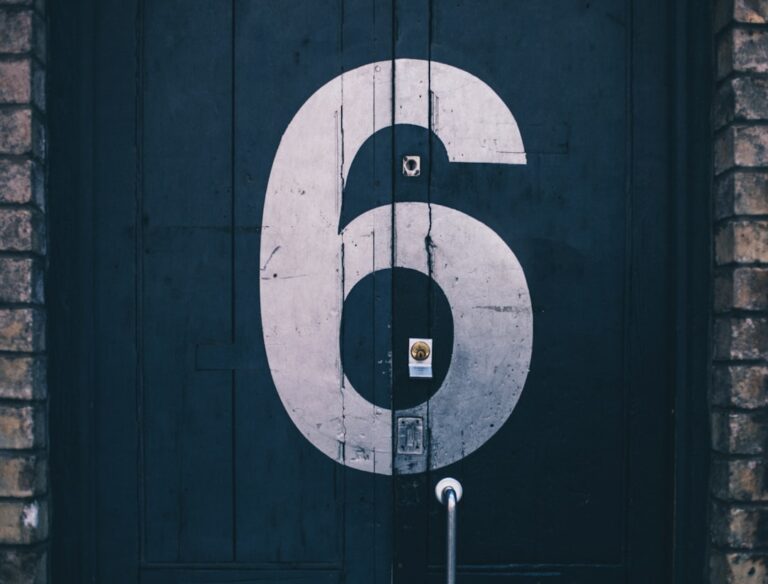Support our educational content for free when you purchase through links on our site. Learn more
You Are Welcome in Spanish to a Woman: 15 Unique Ways to Express Gratitude [2024] 🎉
Have you ever found yourself in a situation where someone thanks you in Spanish, and you’re left fumbling for the right response? 🤔 Imagine this: you’re at a lively fiesta, and a lovely señora thanks you for passing the salsa. You want to respond in a way that’s not only polite but also charming. What do you say?
In this article, we’ll explore 15 unique expressions for saying “you’re welcome” in Spanish, especially when addressing women. From the classic “de nada” to more culturally nuanced phrases, you’ll discover how to navigate gratitude in various social contexts. Did you know that using the right phrase can enhance your connection with Spanish speakers? Get ready to impress your friends, colleagues, and even that special someone with your newfound linguistic flair!
Key Takeaways
- Diverse Expressions: Learn 15 different ways to say “you’re welcome,” each suited for various situations.
- Cultural Context: Understand the importance of context and respect when responding to thanks, especially towards women.
- Regional Variations: Discover how expressions differ across Spanish-speaking countries, enriching your conversational skills.
- Common Mistakes: Avoid pitfalls that could lead to awkward moments in conversation.
Ready to elevate your Spanish conversation skills? Check out our Spanish Vocabulary Books and Language Learning Resources to dive deeper into the language!
Table of Contents
- Quick Tips and Facts: Understanding “You’re Welcome” in Spanish
- Cultural Context: Saying “You’re Welcome” to Women in Spanish-Speaking Countries
- The Fundamentals: How to Say “You’re Welcome” in Spanish
- Low-Key Options: Casual Ways to Respond
- Common in the Service Industry: Professional Responses
- Friendly Options: Warm and Inviting Responses
- Variations Across Regions: How “You’re Welcome” Differs
- Common Mistakes: What to Avoid When Saying “You’re Welcome”
- Fun Phrases: Creative Ways to Say “You’re Welcome”
- Conclusion: You’re Welcome in Spanish
- Get our FREE 7-day email course, Shortcut to Conversational Spanish
- Your First Week Is Just $1
- Recommended Links
- FAQ
- Reference Links
Quick Tips and Facts: Understanding “You’re Welcome” in Spanish
Before we dive into the nitty-gritty, let’s cover some quick tips and facts about saying “you’re welcome” in Spanish. It’s not just about words—it’s about culture, context, and a sprinkle of charm. 🎉
- “De nada” is the most common phrase, translating to “it’s nothing.” It’s your go-to, no-fuss option.
- There are multiple ways to say “you’re welcome,” each with its own flavor and formality level.
- Context matters! The phrase you choose can depend on whether you’re speaking to a friend, a customer, or someone in a formal setting.
- In some regions, certain phrases are favored over others. For example, “A la orden” is popular in Latin America.
- Avoid using “Eres bienvenido” as a response to thanks—it’s a common mistake! It actually means “you are welcome” in the sense of being welcome to a place.
Ready to spice up your Spanish conversations? Let’s explore the cultural nuances and how to charm your way through any thank-you scenario.
Cultural Context: Saying “You’re Welcome” to Women in Spanish-Speaking Countries
When it comes to saying “you’re welcome” to women in Spanish, understanding the cultural context is key. It’s like knowing the secret handshake to a club—you want to get it right!
The Importance of Respect
In many Spanish-speaking cultures, addressing women with respect is essential. Phrases like “No hay de qué” or “A la orden” show politeness and are often used in formal settings or with people you don’t know well. These phrases reflect a cultural emphasis on courtesy and respect.
Gender and Language
While Spanish is a gendered language, the way you say “you’re welcome” doesn’t change based on the gender of the person you’re speaking to. However, the level of formality might. For instance, “Con gusto” is friendly and can be used in both casual and more formal interactions.
Regional Variations
Different regions might have their own preferred expressions. In Spain, you might hear “A mandar,” while in Latin America, “A la orden” is common. It’s like choosing between a taco and a paella—both delicious, but distinct!
The Fundamentals: How to Say “You’re Welcome” in Spanish
Let’s get down to the brass tacks. Here are the fundamental ways to say “you’re welcome” in Spanish. Think of these as your trusty toolkit for any gratitude situation.
Basic Phrases
- De nada: The classic. It’s like the little black dress of responses—appropriate for almost any occasion.
- No es nada: Similar to “de nada,” it’s a humble way to acknowledge thanks.
- Por nada: Less common, but still a solid choice. It’s often used in Latin America.
Formal Options
- No hay de qué: This is a more formal option, akin to saying “there’s nothing to thank me for.”
- A la orden: A polite and formal way to say “at your service.” Perfect for professional settings.
Informal Options
- Con gusto: “With pleasure.” It’s warm and friendly, like a hug in word form.
- No hay problema: “No problem.” Casual and laid-back, perfect for friends or informal settings.
Low-Key Options: Casual Ways to Respond
Sometimes, you just want to keep it chill. Here are some low-key options for when you’re hanging out with friends or in a relaxed environment.
- No te preocupes: “Don’t worry about it.” It’s like saying, “I got your back.”
- No hay problema: “No problem.” A casual, go-with-the-flow response.
- No me cuesta nada: “It doesn’t cost me anything.” A humble way to say it was no trouble at all.
These phrases are great for informal interactions, where the vibe is more relaxed and friendly.
Common in the Service Industry: Professional Responses
In the service industry, the way you respond to thanks can make or break the customer experience. Here’s how to keep it professional and courteous.
- A la orden: “At your service.” Common in Latin America, it conveys readiness to assist.
- Para eso estamos: “That’s why we’re here.” It’s like saying, “I’m here to help.”
- Gracias a usted: “Thanks to you.” A polite way to reciprocate gratitude.
These responses are perfect for interactions with clients, customers, or anyone in a professional setting.
Friendly Options: Warm and Inviting Responses
Want to add a personal touch to your “you’re welcome”? Here are some friendly options that feel like a warm embrace.
- Para eso están los amigos: “That’s why we’re friends.” It implies a sense of camaraderie and support.
- Hoy por ti, mañana por mí: “Today for you, tomorrow for me.” It’s a nod to mutual support and friendship.
- Es un placer: “It’s a pleasure.” A warm and gracious way to respond.
These phrases are ideal for friends, family, or anyone you want to feel appreciated and welcomed.
Variations Across Regions: How “You’re Welcome” Differs
Just like how accents and slang can vary across English-speaking countries, saying “you’re welcome” in Spanish can differ depending on where you are. Let’s explore these regional variations. 🌎
Spain
- A mandar: “At your command.” It’s a more formal and respectful way to respond, often used in Spain.
- Las que tú tienes: An older expression, meaning “the gracefulness that you already have.”
Latin America
- A la orden: Widely used across Latin America, it’s a polite and formal option.
- Con mucho gusto: “With much pleasure.” It’s a more enthusiastic and friendly way to say “you’re welcome.”
Caribbean
In regions like the Caribbean, you might hear “A su orden” or “Con gusto” more frequently, reflecting the local linguistic and cultural nuances.
Common Mistakes: What to Avoid When Saying “You’re Welcome”
Even the best of us can slip up. Here are some common mistakes to avoid when responding to thanks in Spanish.
- Using “Eres bienvenido” as a response. This actually means “you are welcome” in the sense of being welcome to a place, not as a response to thanks.
- Mixing up formal and informal phrases. Using “No te preocupes” in a formal setting might come off as too casual.
- Overusing “De nada” in situations where a more formal or friendly response is appropriate.
By avoiding these pitfalls, you’ll ensure your Spanish is as smooth as a fresh cup of café con leche.
Fun Phrases: Creative Ways to Say “You’re Welcome”
Why stick to the basics when you can get creative? Here are some fun and unique ways to say “you’re welcome” in Spanish that will leave a lasting impression.
- No fue nada: “It was nothing.” A casual and breezy way to respond.
- Estamos en esto juntos: “We’re in this together.” Perfect for building rapport and connection.
- Siempre a tu disposición: “Always at your disposal.” A formal yet friendly way to show you’re there to help.
These phrases add a bit of flair to your interactions, making them memorable and engaging.
With these insights, you’re now equipped to navigate the world of Spanish gratitude with confidence and style! Whether you’re chatting with friends or impressing your boss, you’ll have the perfect response at your fingertips. Stay tuned for our conclusion, where we’ll wrap up with some final thoughts and recommendations.
Conclusion: You’re Welcome in Spanish

In summary, saying “you’re welcome” in Spanish is more than just a phrase; it’s a reflection of culture, respect, and warmth. From the ever-popular “de nada” to the more nuanced “a la orden,” you now have a plethora of options to express gratitude in various contexts. Whether you’re in a casual setting with friends or in a formal business environment, knowing the right phrase can enhance your communication and connection with Spanish speakers.
Positives:
- Variety of Expressions: You have multiple ways to say “you’re welcome,” allowing for flexibility depending on the situation.
- Cultural Relevance: Understanding the cultural context adds depth to your conversations.
- Friendly and Professional Options: You can easily switch between casual and formal language.
Negatives:
- Regional Differences: Some phrases may not be understood in all Spanish-speaking countries, which can lead to confusion.
- Common Mistakes: Misusing certain phrases can come off as informal or inappropriate.
Overall, we confidently recommend incorporating these expressions into your Spanish vocabulary. With practice, you’ll not only sound more fluent but also connect better with those around you.
Recommended Links
FAQ

How do you say you’re welcome in Spanish for a female?
When responding to a thank you from a female, the phrase remains the same. You would still say “de nada,” “no hay de qué,” or any other variation. The gender of the speaker does not change the response; however, be mindful of the context and formality.
What can I say instead of “de nada”?
If you’re looking for alternatives to “de nada,” consider:
- “No es nada”: Meaning “It’s nothing.”
- “Con gusto”: Meaning “With pleasure.”
- “No hay problema”: Meaning “No problem.”
These alternatives can add variety to your responses and suit different situations.
How do Mexicans say you’re welcome?
In Mexico, the most common way to say “you’re welcome” is “de nada.” However, you might also hear:
- “No hay de qué”: A slightly more formal alternative.
- “A la orden”: Used in service contexts, meaning “At your service.”
Why does “de nada” mean you’re welcome?
The phrase “de nada” translates literally to “of nothing,” which conveys the idea that the help or favor you provided was no trouble at all. It’s a humble way of acknowledging gratitude, emphasizing that you were happy to assist without expecting anything in return.
Read more about “You’re Welcome in Spanish to a Woman: 100 Authentic Ways to Express Gratitude! … 🌟”
Can “de nada” be used in formal situations?
Yes! “De nada” is versatile and can be used in both informal and formal situations, making it a safe choice when responding to thanks in any context.
Read more about “… Denada or De Nada: A Comprehensive Guide to Polite Responses in Spanish”
Are there regional variations in saying “you’re welcome”?
Absolutely! Each Spanish-speaking country may have its preferred expressions. For example, “a la orden” is common in Latin America, while “a mandar” is used in Spain. It’s essential to be aware of these variations to communicate effectively.
Read more about “Discover 15 Unique Ways to Say “Thank You, My Friend” in Spanish … 🎉”
Reference Links
- Baselang: You’re Welcome in Spanish
- WikiHow: How to Say You’re Welcome in Spanish
- Spanish Scholar™: Spanish Vocabulary
- Spanish Language Learning Resources
- Spanish Conversation Practice
- Spanish Cultural Insights
- Spanish Language Resources
With this knowledge in hand, you’re ready to navigate the world of Spanish gratitude with confidence! 🎉



